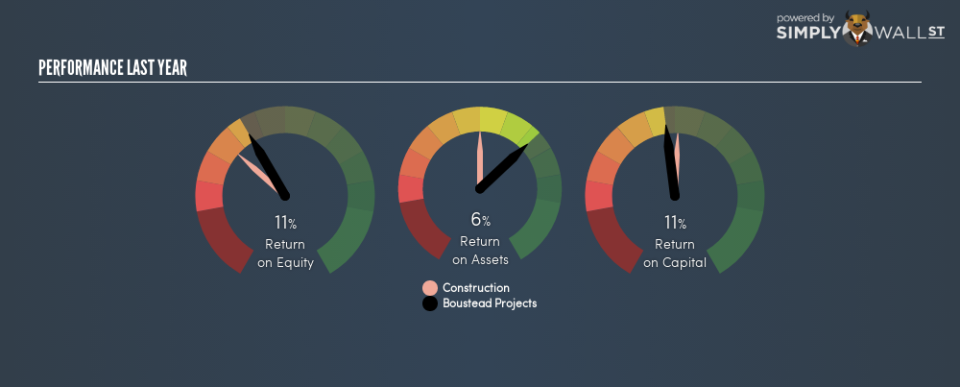Boustead Projects Limited (SGX:AVM) Earns A Nice Return On Capital Employed

Want to participate in a short research study? Help shape the future of investing tools and you could win a $250 gift card!
Today we are going to look at Boustead Projects Limited (SGX:AVM) to see whether it might be an attractive investment prospect. Specifically, we’re going to calculate its Return On Capital Employed (ROCE), in the hopes of getting some insight into the business.
First of all, we’ll work out how to calculate ROCE. Second, we’ll look at its ROCE compared to similar companies. Then we’ll determine how its current liabilities are affecting its ROCE.
Return On Capital Employed (ROCE): What is it?
ROCE measures the ‘return’ (pre-tax profit) a company generates from capital employed in its business. In general, businesses with a higher ROCE are usually better quality. Overall, it is a valuable metric that has its flaws. Author Edwin Whiting says to be careful when comparing the ROCE of different businesses, since ‘No two businesses are exactly alike.’
So, How Do We Calculate ROCE?
The formula for calculating the return on capital employed is:
Return on Capital Employed = Earnings Before Interest and Tax (EBIT) ÷ (Total Assets – Current Liabilities)
Or for Boustead Projects:
0.11 = S$37m ÷ (S$517m – S$184m) (Based on the trailing twelve months to December 2018.)
Therefore, Boustead Projects has an ROCE of 11%.
Check out our latest analysis for Boustead Projects
Is Boustead Projects’s ROCE Good?
ROCE is commonly used for comparing the performance of similar businesses. Boustead Projects’s ROCE appears to be substantially greater than the 6.9% average in the Construction industry. We consider this a positive sign, because it suggests it uses capital more efficiently than similar companies. Independently of how Boustead Projects compares to its industry, its ROCE in absolute terms appears decent, and the company may be worthy of closer investigation.
Remember that this metric is backwards looking – it shows what has happened in the past, and does not accurately predict the future. ROCE can be misleading for companies in cyclical industries, with returns looking impressive during the boom times, but very weak during the busts. ROCE is, after all, simply a snap shot of a single year. How cyclical is Boustead Projects? You can see for yourself by looking at this free graph of past earnings, revenue and cash flow.
Boustead Projects’s Current Liabilities And Their Impact On Its ROCE
Current liabilities include invoices, such as supplier payments, short-term debt, or a tax bill, that need to be paid within 12 months. Due to the way the ROCE equation works, having large bills due in the near term can make it look as though a company has less capital employed, and thus a higher ROCE than usual. To counteract this, we check if a company has high current liabilities, relative to its total assets.
Boustead Projects has total liabilities of S$184m and total assets of S$517m. Therefore its current liabilities are equivalent to approximately 36% of its total assets. Boustead Projects has a medium level of current liabilities, which would boost the ROCE.
What We Can Learn From Boustead Projects’s ROCE
While its ROCE looks good, it’s worth remembering that the current liabilities are making the business look better. You might be able to find a better buy than Boustead Projects. If you want a selection of possible winners, check out this free list of interesting companies that trade on a P/E below 20 (but have proven they can grow earnings).
For those who like to find winning investments this free list of growing companies with recent insider purchasing, could be just the ticket.
To help readers see past the short term volatility of the financial market, we aim to bring you a long-term focused research analysis purely driven by fundamental data. Note that our analysis does not factor in the latest price-sensitive company announcements.
The author is an independent contributor and at the time of publication had no position in the stocks mentioned. For errors that warrant correction please contact the editor at editorial-team@simplywallst.com.

